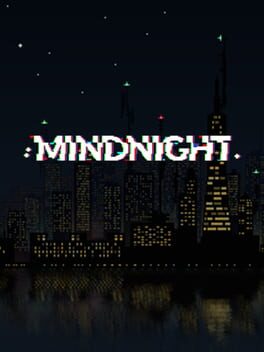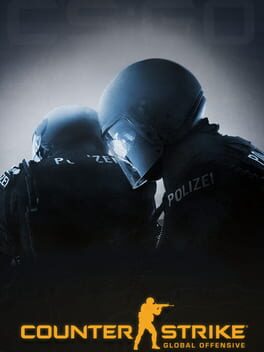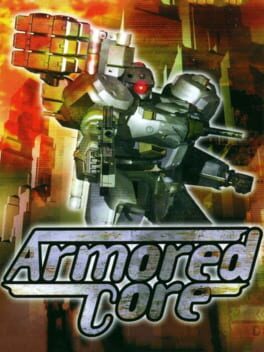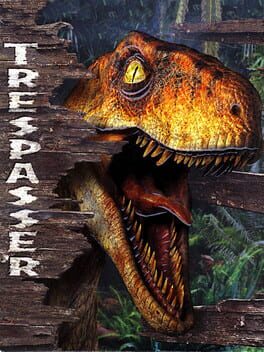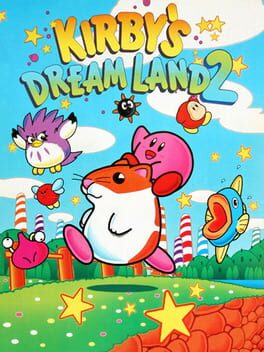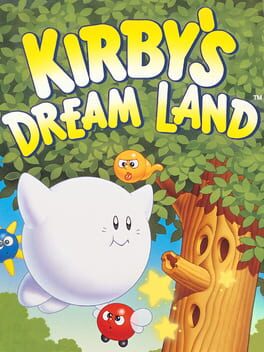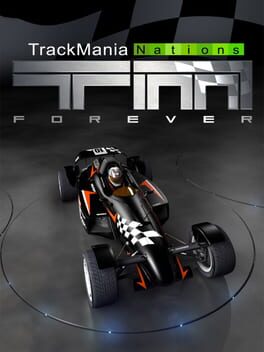Chariot_Rider
2017
Mindnight is a fun social deduction game with friends. It's incredibly simple, but can lead to interesting social moments. It's structurally quite similar to Secret Hitler where multiple policies have to be enacted for either team to win, which to a certain extent works against this game. Mindnight is incredibly mechanically simple, but that also means that in comparison to other social deduction games it doesn't offer as much to go on when making decisions. As a result, the first voting round almost always plays out the same, and as a result games take awhile to get going, where as other social deduction games get to the scheming and accusation much faster. It's a solid time, but I would definitely choose a social deduction games that is slightly more mechanically dense with a few more things going on over this.
The UI is also not entirely ideal. The game opens with a tutorial movie which works but feels a bit odd, and the UI feels cluttered with a mictrotransaction store and oddness in the server setup. A decent amount of the playtime I have in this game was spent not realizing that the host had to press a button, even though everyone had readied, or it took awhile to learn how to equip a skin, and overall the UI felt a bit lacking. Functional, but with enough small hiccups to be noticeable. However this is worth checking out with some friends for a night.
The UI is also not entirely ideal. The game opens with a tutorial movie which works but feels a bit odd, and the UI feels cluttered with a mictrotransaction store and oddness in the server setup. A decent amount of the playtime I have in this game was spent not realizing that the host had to press a button, even though everyone had readied, or it took awhile to learn how to equip a skin, and overall the UI felt a bit lacking. Functional, but with enough small hiccups to be noticeable. However this is worth checking out with some friends for a night.
I have complicated feelings about Counter Strike Global Offensive because on the one hand, I think it's mechanics are brilliant. It is an extremely well designed, strategic shooter. Matches can have a ton of strategy, prediction, and generally trying to out think and out flank your opponent. This partially comes down to how lethal this game is. Counter Strike kills you incredibly quickly, so it is usually the person who sees their opponent first that wins. As such, positioning and flanking are really important, as is thinking about how your opponent might approach a situation. It's incredibly satisfying, and is one of the most strategic shooters I have ever played. However, actually playing Counter Strike Global Offensive could be an incredibly mixed bag because of the online experience. If you mess up, opponents are likely to yell at you. I have been called an NPC and an AI for making mistakes, as all beginners to a game do. I've had people report my account after some bad plays. Playing Counter Strike can be so stressful because you feel a need to perform well so your team doesn't get mad. With friends this problem can be solved, but finding 4 other people of roughly the same skill level that want to play this is tricky.
Ultimately, I could give a deeper review if I had more time with the game, but unfortunately Counter Strike Global Offensive has been delisted because of the release of Counter Strike 2. This is an incredibly sad and worrying move on Valve's end, and I hope for legacy and preservation's sake it is returned to steam alongside its sequel. Ultimately, Counter Strike is a great game whose competitive community takes it so seriously that it harms my enjoyment.
Ultimately, I could give a deeper review if I had more time with the game, but unfortunately Counter Strike Global Offensive has been delisted because of the release of Counter Strike 2. This is an incredibly sad and worrying move on Valve's end, and I hope for legacy and preservation's sake it is returned to steam alongside its sequel. Ultimately, Counter Strike is a great game whose competitive community takes it so seriously that it harms my enjoyment.
1997
I love Armored Core. This game has the trappings of a fascinating action game. It is clunky, but it could easily be argued that its clunk is often the point. Armored Core wants to sell you on the fact that piloting a huge war machine is actually pretty sluggish and clunky, and it succeeds at this while also improving over the course of the game. As you buy new parts, old annoying aspects of control fade away and your machine feels more modern and powerful.
The progression in this game is noteworthy. In between missions you can buy items at a shop, but this isn't a simply case of buying the best item with the best stats because everything has tradeoffs. Having heavy armor or lots of guns will make your vehicle overweight. This can be overcome by having more powerful legs, but these use more energy so you would need a better generator and the bigger generator will be heavier and at that point maybe its worth looking at a different kind of gun that's potentially lighter to do the job. There is a lot to consider when building your mech, and this makes the choice of how to build incredibly meaningful. There are some missions where certain loadouts are better, and you often have to figure out what the optimal loadout will be based on a description alone. This makes a first time run incredibly tense because you don't know what will in store for you, especially because missions will often throw in unexpected surprises into missions. These surprises are fascinating in the sense that AC is such a plan heavy game. I spend a long time planning my mech and optimizing its approach to suit different missions, but these surprises can counter planning to a certain extent and force you to always anticipate unknown threats. One downside of this is that repeat playthroughs can't quite carry the same level of surprise, and the game becomes a lot easier and loses the surprise that keeps you on the tips of your toes.
Armored Core's mission design does a lot for the game. Each mission presents a unique obstacle to the player and each stands on their own. Overall, I like the missions, though there are some that clearly stand out over the others. In particular, the game's final mission is genuinely awful, and is a greater drop in quality than Xen was for Half Life.
Overall, Armored Core is an excellent action game. It's controls are clunky, but that's fitting for the sort of experience the game is going for and only rarely detracts from the experience. It's economic themes pair well with the game's writing, creating an effective critique of capitalism with only a few simple elements
The progression in this game is noteworthy. In between missions you can buy items at a shop, but this isn't a simply case of buying the best item with the best stats because everything has tradeoffs. Having heavy armor or lots of guns will make your vehicle overweight. This can be overcome by having more powerful legs, but these use more energy so you would need a better generator and the bigger generator will be heavier and at that point maybe its worth looking at a different kind of gun that's potentially lighter to do the job. There is a lot to consider when building your mech, and this makes the choice of how to build incredibly meaningful. There are some missions where certain loadouts are better, and you often have to figure out what the optimal loadout will be based on a description alone. This makes a first time run incredibly tense because you don't know what will in store for you, especially because missions will often throw in unexpected surprises into missions. These surprises are fascinating in the sense that AC is such a plan heavy game. I spend a long time planning my mech and optimizing its approach to suit different missions, but these surprises can counter planning to a certain extent and force you to always anticipate unknown threats. One downside of this is that repeat playthroughs can't quite carry the same level of surprise, and the game becomes a lot easier and loses the surprise that keeps you on the tips of your toes.
Armored Core's mission design does a lot for the game. Each mission presents a unique obstacle to the player and each stands on their own. Overall, I like the missions, though there are some that clearly stand out over the others. In particular, the game's final mission is genuinely awful, and is a greater drop in quality than Xen was for Half Life.
Overall, Armored Core is an excellent action game. It's controls are clunky, but that's fitting for the sort of experience the game is going for and only rarely detracts from the experience. It's economic themes pair well with the game's writing, creating an effective critique of capitalism with only a few simple elements
1998
Trespasser is a fascinating oddity. Ultimately, I have a lot of respect for its ambition, even if its execution leaves a lot to be desired. Even to this day, there isn't all that much quite like Trespasser, and there are definitely reasons for that.
It's controls are pretty sluggish, which isn't inherently a bad thing. Your floppy noodle arm makes it trickier to line up shots, which makes charging dinos a lot more threatening than they would be with a standard "crosshair at the center of the screen" sort of aiming. There's a certain tactility to the shooting in Trespasser that really is only rivaled by VR shooters.
The level design aims for realism, often at the expense of fun, and even then some of its levels feels incredibly goofy. The huge map is certainly reflective of an actual island's size, but with your slow walking speed it becomes quite a chore to traverse. That isn't to say that the realism doesn't have its benefits, but the game's systems make those harder to appreciate.
The game's puzzles are baffling at times. None of them are especially difficult, and often it feels like they are less puzzles and more a demonstration of the game's novel physics engine. This is best epitomized by a puzzle at the end of the game with a lever that raises an elevator. You can't press that lever while on the elevator, but there is a really convenient plank of wood waiting to be shot over onto the button. It feels incredibly gamey, like the designer's hand is guiding you to its solution in a way that clashes with the game's aspirations for a realistic, seamless world. This applies to pretty much every puzzle in the game.
Trespasser is a game pulled both in a very gamey and realistic direction in a way that led to a tonally odd game. Nonetheless, no game from the time really tried many of the things Trespasser did, and in that regard it died a pioneers death. This game has physics puzzles that weren't ideal, but it was doing them years before Half Life 2. It has realistic jungles years before Crysis. It achieved a hudless UI, in an admittedly pretty tacky and infamous way. One could easily criticize those aspects of the game, but I also feel it earns a lot of grace purely for the size of its ambition. It's actually an incredibly fascinating time to play, and while I can't really call it a "great" game in the way I might something like Rain World, that shouldn't diminish the value of this game, nor should it even necessarily dissuade anyone else from giving it a try.
It's controls are pretty sluggish, which isn't inherently a bad thing. Your floppy noodle arm makes it trickier to line up shots, which makes charging dinos a lot more threatening than they would be with a standard "crosshair at the center of the screen" sort of aiming. There's a certain tactility to the shooting in Trespasser that really is only rivaled by VR shooters.
The level design aims for realism, often at the expense of fun, and even then some of its levels feels incredibly goofy. The huge map is certainly reflective of an actual island's size, but with your slow walking speed it becomes quite a chore to traverse. That isn't to say that the realism doesn't have its benefits, but the game's systems make those harder to appreciate.
The game's puzzles are baffling at times. None of them are especially difficult, and often it feels like they are less puzzles and more a demonstration of the game's novel physics engine. This is best epitomized by a puzzle at the end of the game with a lever that raises an elevator. You can't press that lever while on the elevator, but there is a really convenient plank of wood waiting to be shot over onto the button. It feels incredibly gamey, like the designer's hand is guiding you to its solution in a way that clashes with the game's aspirations for a realistic, seamless world. This applies to pretty much every puzzle in the game.
Trespasser is a game pulled both in a very gamey and realistic direction in a way that led to a tonally odd game. Nonetheless, no game from the time really tried many of the things Trespasser did, and in that regard it died a pioneers death. This game has physics puzzles that weren't ideal, but it was doing them years before Half Life 2. It has realistic jungles years before Crysis. It achieved a hudless UI, in an admittedly pretty tacky and infamous way. One could easily criticize those aspects of the game, but I also feel it earns a lot of grace purely for the size of its ambition. It's actually an incredibly fascinating time to play, and while I can't really call it a "great" game in the way I might something like Rain World, that shouldn't diminish the value of this game, nor should it even necessarily dissuade anyone else from giving it a try.
1995
It is astounding how much of an improvement Kirby's Dream Land is to its prequel. DL1 is a perfectly serviceable platformer, but 2 has so much more identity. The introduction of copy abilities alone does a lot to make Kirby's gameplay much more interesting. With copy abilities, I found myself considering what would be best to carry forward to other parts of the game, giving a lot more moment to moment decision making that simply wasn't present in the more reactive gameplay of 1.
Alongside copies, the level design has also largely improved. There are still some levels that lack identity, but there are more memorable moments on offer here. Levels like the maze filled with crumbling cloud blocks was a real highlight. However, where 2's levels reach a more iconic high, it also has its mean moments. One standout level is an autoscroller where you have to guess what path is correct, and if you are wrong you die. As far as I could tell, there was no pattern to discerning the "correct" path. Autoscrollers in general were responsible for a decent amount of unfair moments in this game, though sometimes it gave levels a bit of spice.
I like the star life system. While lives aren't all that meaningful if you just want to beat the game since you can use as many continues as you want, for those dedicated to a 1 credit clear they add a lot to the levels. Stars are sometimes used as rewards for explorative players or for holding onto upgrades past a difficult section.
The animal buddies are fun too. They're the best example of how much cuter this game looks than its predecessor. It's very pretty. Mechanically, the animal friends are fun and combining them with copy abilities gave me some interesting experimentation. The bird is easily the best, where as the fish was a lot more situational. Holding onto them as long as possible was a fun challenge.
Bosses in this game were generally better too. The ice block guy was trivially easy, but everyone else felt like they posed a threat while also not being overly tedious to fight. The Dedede fight is quite similar to the first game, but a few changes make it a lot less of a waiting game, and it is instead a bloodbath. I probably died the most at Dedede than I did anywhere else. That being said, his anger causing him to throw out more stars that are riskier to collect is an inspired change that I appreciate after the boring drawn out fight of the first game.
Overall, these changes cumulatively create a much more engaging and memorable experience than its predecessor.
Alongside copies, the level design has also largely improved. There are still some levels that lack identity, but there are more memorable moments on offer here. Levels like the maze filled with crumbling cloud blocks was a real highlight. However, where 2's levels reach a more iconic high, it also has its mean moments. One standout level is an autoscroller where you have to guess what path is correct, and if you are wrong you die. As far as I could tell, there was no pattern to discerning the "correct" path. Autoscrollers in general were responsible for a decent amount of unfair moments in this game, though sometimes it gave levels a bit of spice.
I like the star life system. While lives aren't all that meaningful if you just want to beat the game since you can use as many continues as you want, for those dedicated to a 1 credit clear they add a lot to the levels. Stars are sometimes used as rewards for explorative players or for holding onto upgrades past a difficult section.
The animal buddies are fun too. They're the best example of how much cuter this game looks than its predecessor. It's very pretty. Mechanically, the animal friends are fun and combining them with copy abilities gave me some interesting experimentation. The bird is easily the best, where as the fish was a lot more situational. Holding onto them as long as possible was a fun challenge.
Bosses in this game were generally better too. The ice block guy was trivially easy, but everyone else felt like they posed a threat while also not being overly tedious to fight. The Dedede fight is quite similar to the first game, but a few changes make it a lot less of a waiting game, and it is instead a bloodbath. I probably died the most at Dedede than I did anywhere else. That being said, his anger causing him to throw out more stars that are riskier to collect is an inspired change that I appreciate after the boring drawn out fight of the first game.
Overall, these changes cumulatively create a much more engaging and memorable experience than its predecessor.
1992
Kirby’s Dream Land is short enough that it doesn’t overstay it’s welcome. It’s cute and has some charming character designs which help elevate it above other platformers of a similar caliber. While some enemies didn’t stand out all that much, I others were set apart by simply and unique changes, like not being able to be sucked up or having a weird movement pattern.
Kirby is known as an east series, and to an extent it is. The first few levels don’t put up that much resistance, but that’s typical of almost platformers. However the later levels have enough tricks that you have to stay on your toes, even if just a bit. It’s not mindless. In fact, by the end of the game I had to use a continue in the final boss rush.
The Dedexe fight was a bit annoying. I am not sure if there are other ways of damaging him, but I could only damage him by sucking up stars, which he only releases with two attacks. One of them backs you into a corner and can easily do damage, and the other is a big jump that releases stars. That’s the only move I could consistently damage him with, but it’s all up to luck if he’s going to throw it. He could throw out out 3 times in a row, or wait 30 seconds. It made the final boss boring because I spent most of my time waiting. It’s trivial to dodge the other attacks, so it was just me waiting for him to get his stuff over with so I could move on.
Overall, it’s a solid time. It’s worth an hour to play through it at least once. I also appreciate the harder bonus game, but it’s boss design is pretty rough so I didn’t get too far into it, but for big Kirby fans it’s nice to have.
Kirby is known as an east series, and to an extent it is. The first few levels don’t put up that much resistance, but that’s typical of almost platformers. However the later levels have enough tricks that you have to stay on your toes, even if just a bit. It’s not mindless. In fact, by the end of the game I had to use a continue in the final boss rush.
The Dedexe fight was a bit annoying. I am not sure if there are other ways of damaging him, but I could only damage him by sucking up stars, which he only releases with two attacks. One of them backs you into a corner and can easily do damage, and the other is a big jump that releases stars. That’s the only move I could consistently damage him with, but it’s all up to luck if he’s going to throw it. He could throw out out 3 times in a row, or wait 30 seconds. It made the final boss boring because I spent most of my time waiting. It’s trivial to dodge the other attacks, so it was just me waiting for him to get his stuff over with so I could move on.
Overall, it’s a solid time. It’s worth an hour to play through it at least once. I also appreciate the harder bonus game, but it’s boss design is pretty rough so I didn’t get too far into it, but for big Kirby fans it’s nice to have.
1993
It's easy to understand why Doom became such an influential and iconic game. It's action holds up decades later, and its visuals have aged gracefully into being cartoony fun. Its first episodes are a great opening for what Doom can be, with a good mix of action packed tech bases and puzzle hunts, however I feel that Doom is held back by its later episodes which become a lot more gimmicky, brutal, or sloggish. Some levels in later episodes would leave me wandering for ages. I had killed all of the demons, but because I couldn't pin down some obtuse and poorly hidden key, I was stuck. However, these episodes can only hold Doom back so much, and overall the game outshines it weaker moments, laying out an iconic groundwork for future games and modders to play with.
Trackmania Nations Forever is an all time greatest racing game for me. It's controls are devilishly simple, but that hides a depth which is immense. It's a series all about making tricky jumps, and rounding corners in just the right way that you maintain your speed. Keeping speed in Trackmania is exhilarating, and it feels faster than many other racing games, even if it isn't on paper.
A lot of what I love about this game comes from the custom content. Trackmania players have made all kinds of absurd and tricky courses, enough that there's functionally no end to the racing. In a sense, the track is your true enemy. Sure other people are racing with you, but it's easy to forget about them as you just try to finish a tricky track.
Racing in Trackmania has tricks and all kinds of wild jumps that are exhilarating. The track design has an anarchic, wild energy that few other racing games possess. Plus, the game is entirely free, unlike its newer counterpart which locks the custom content (the best content in the series imo) behind a subscription service. Not that I begrudge it for doing so, it must make money somehow, but the older iteration has that content for free. It's a must play for anyone with a computer that can run this very easy to run game.
A lot of what I love about this game comes from the custom content. Trackmania players have made all kinds of absurd and tricky courses, enough that there's functionally no end to the racing. In a sense, the track is your true enemy. Sure other people are racing with you, but it's easy to forget about them as you just try to finish a tricky track.
Racing in Trackmania has tricks and all kinds of wild jumps that are exhilarating. The track design has an anarchic, wild energy that few other racing games possess. Plus, the game is entirely free, unlike its newer counterpart which locks the custom content (the best content in the series imo) behind a subscription service. Not that I begrudge it for doing so, it must make money somehow, but the older iteration has that content for free. It's a must play for anyone with a computer that can run this very easy to run game.
2004
Yume Nikki is an all time classic. I first played it in college, and frankly, I wasn't quite sure if I would enjoy it. I was intrigued by the premise, but I thought that perhaps I might get bored at just walking around. Instead, I found myself completely encapsulated, exploring the world for hours.
The game's premise is so elegant, but like everything in this game, leaves room for the player to consider and ponder. Madotsuki is alone in her room, and for whatever reason, refuses to go outside, instead choosing to dream. There's a tragic aspect of this setup that looms over the whole game. You aren't merely exploring the dreams of a random person. Rather, you are reading the dreams of someone specific, and probably not someone who is in the best state of mind. Perhaps that is me reading into things and projecting my own thoughts and feelings onto the game, but that is what Yume Nikki is all about. Its a world filled with visual detail, but the specifics of their meaning is hazy at best, and thus there are gaps to be filled by the observer in a Roland Barthian sense. Everyone fills those gaps in their own way, to the point that their own reading of the game to an extent becomes a reflection of their own self. While this is true of all art, it's especially true when so many of the details are left up to interpretation.
The game's dream worlds are fascinating. The vast majority make me feel lonely, even when they have inhabitants. There's always a certain distance felt between Madotsuki and the strange beings of her dreams, at least in most cases. The worlds themselves are ethereal and bizarre, their dreamlike quality aided by the short music loops that become memetically drilled into your head. Part of the joy of exploration is not knowing what else is out there. There's snow, buildings, abstract voids, and so much more, and I wanted to see it all.
While Yume Nikki could be said to be a game "just" about walking, that would imply that the act of walking is uninteresting. Rather, Yume Nikki is a game about observing, and thinking, acts which aren't mechanical in nature, but take place in the player's head. I loved thinking about the things I was seeing, marveling in their strangeness, vibing to the aura, and experiencing things. The gameplay of Yume Nikki truly lies in the thoughts constructed in your own head.
I have never been particularly fond of Yume Nikki's ending. In a sense, the foreboding atmosphere implied by the game's premise is heightened in a tragic and sad climax. Its an incredibly somber note to end on, and in a sense does ring true to the experience of stewing in negative and depressive thoughts. But, it has always felt sour to me. Its an aspect of this game that, while I'm not huge on it in its original context, has been commented upon by other games responding to Yume Nikki. This scene, for better or worse, became a lasting part of the game's legacy, and in a sense is recontextualized by the media around it. In particular, Yume 2kki and OMORI both have their own twists on this ending that I actually find fascinating, and worthy of their own exploration, that work in the context of those games.
All in all, Yume Nikki is a game that is worth as much time as you want to give to it. If you play it for 20 minutes, or get obsessed and play it for hours on end (like I did), you will find something to appreciate about it. For the time it released, it's incredibly unique. Not much else was like it at the time, and it helped forge a new possibility for what games could be. Its a game that is free and easy to access, that runs on almost any computer made in the past 20 years. There's no reason not to play Yume Nikki. Frankly, I could keep talking as this is only a snippet of my thoughts on the game, but this should suffice for now. Enjoy your dreams!
The game's premise is so elegant, but like everything in this game, leaves room for the player to consider and ponder. Madotsuki is alone in her room, and for whatever reason, refuses to go outside, instead choosing to dream. There's a tragic aspect of this setup that looms over the whole game. You aren't merely exploring the dreams of a random person. Rather, you are reading the dreams of someone specific, and probably not someone who is in the best state of mind. Perhaps that is me reading into things and projecting my own thoughts and feelings onto the game, but that is what Yume Nikki is all about. Its a world filled with visual detail, but the specifics of their meaning is hazy at best, and thus there are gaps to be filled by the observer in a Roland Barthian sense. Everyone fills those gaps in their own way, to the point that their own reading of the game to an extent becomes a reflection of their own self. While this is true of all art, it's especially true when so many of the details are left up to interpretation.
The game's dream worlds are fascinating. The vast majority make me feel lonely, even when they have inhabitants. There's always a certain distance felt between Madotsuki and the strange beings of her dreams, at least in most cases. The worlds themselves are ethereal and bizarre, their dreamlike quality aided by the short music loops that become memetically drilled into your head. Part of the joy of exploration is not knowing what else is out there. There's snow, buildings, abstract voids, and so much more, and I wanted to see it all.
While Yume Nikki could be said to be a game "just" about walking, that would imply that the act of walking is uninteresting. Rather, Yume Nikki is a game about observing, and thinking, acts which aren't mechanical in nature, but take place in the player's head. I loved thinking about the things I was seeing, marveling in their strangeness, vibing to the aura, and experiencing things. The gameplay of Yume Nikki truly lies in the thoughts constructed in your own head.
I have never been particularly fond of Yume Nikki's ending. In a sense, the foreboding atmosphere implied by the game's premise is heightened in a tragic and sad climax. Its an incredibly somber note to end on, and in a sense does ring true to the experience of stewing in negative and depressive thoughts. But, it has always felt sour to me. Its an aspect of this game that, while I'm not huge on it in its original context, has been commented upon by other games responding to Yume Nikki. This scene, for better or worse, became a lasting part of the game's legacy, and in a sense is recontextualized by the media around it. In particular, Yume 2kki and OMORI both have their own twists on this ending that I actually find fascinating, and worthy of their own exploration, that work in the context of those games.
All in all, Yume Nikki is a game that is worth as much time as you want to give to it. If you play it for 20 minutes, or get obsessed and play it for hours on end (like I did), you will find something to appreciate about it. For the time it released, it's incredibly unique. Not much else was like it at the time, and it helped forge a new possibility for what games could be. Its a game that is free and easy to access, that runs on almost any computer made in the past 20 years. There's no reason not to play Yume Nikki. Frankly, I could keep talking as this is only a snippet of my thoughts on the game, but this should suffice for now. Enjoy your dreams!
